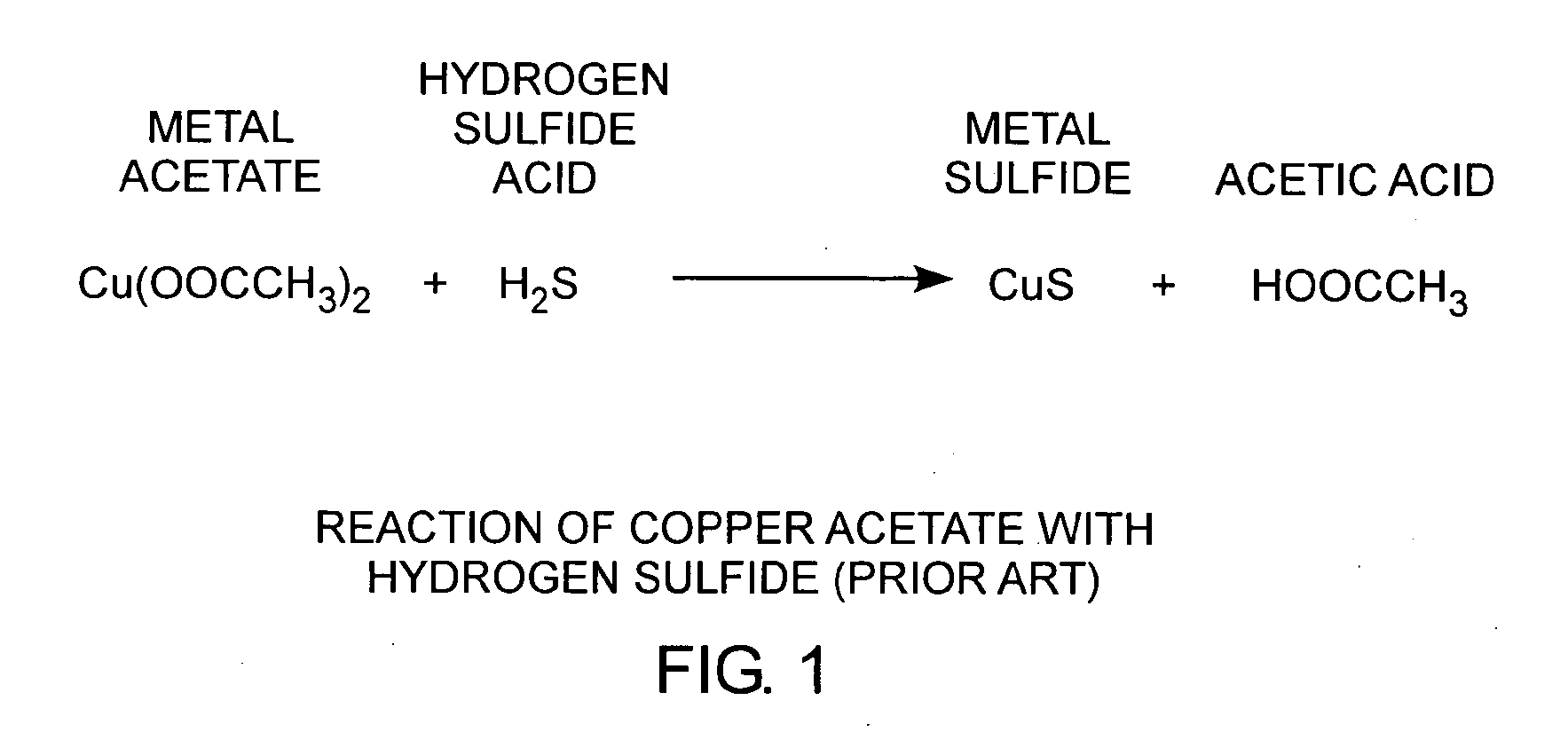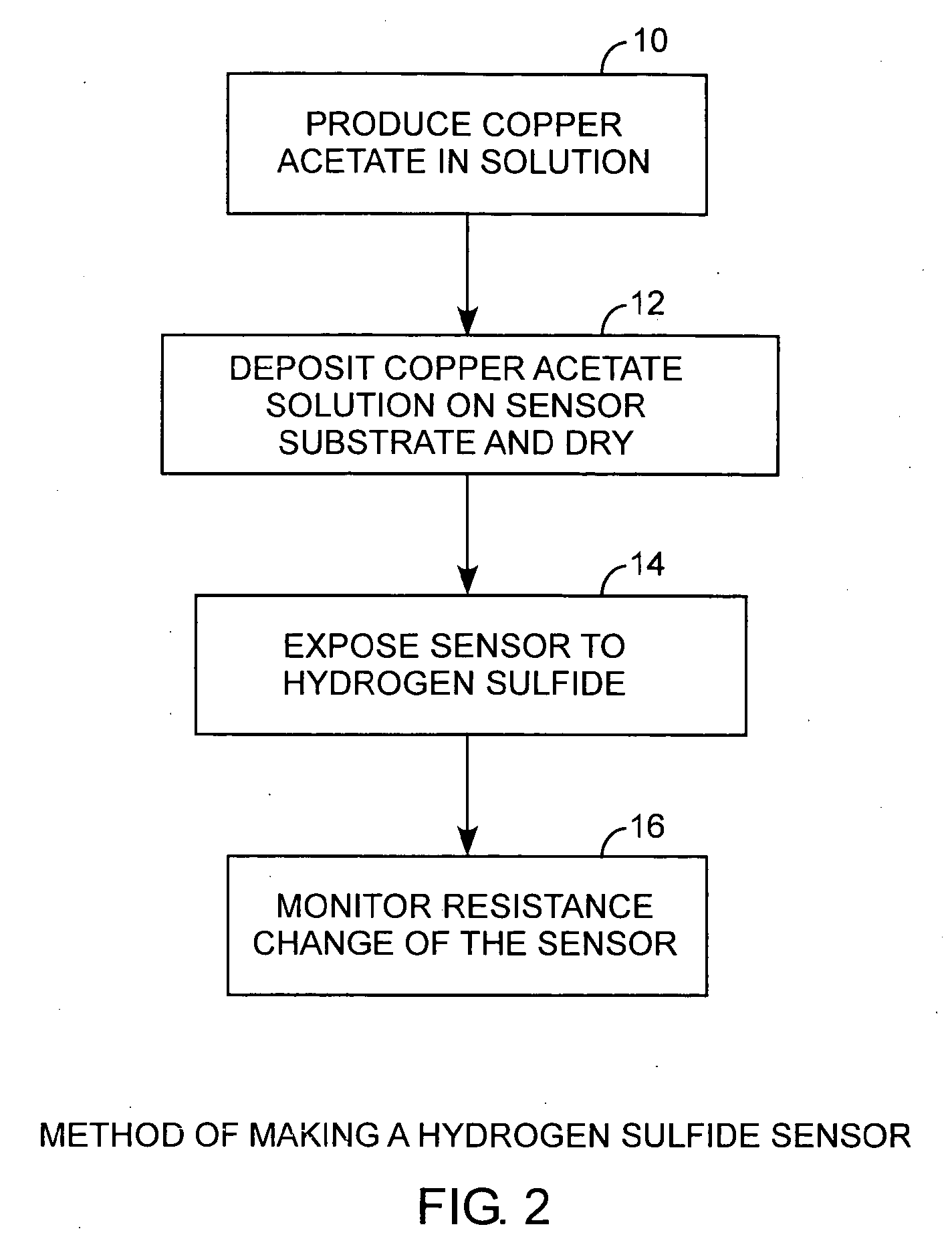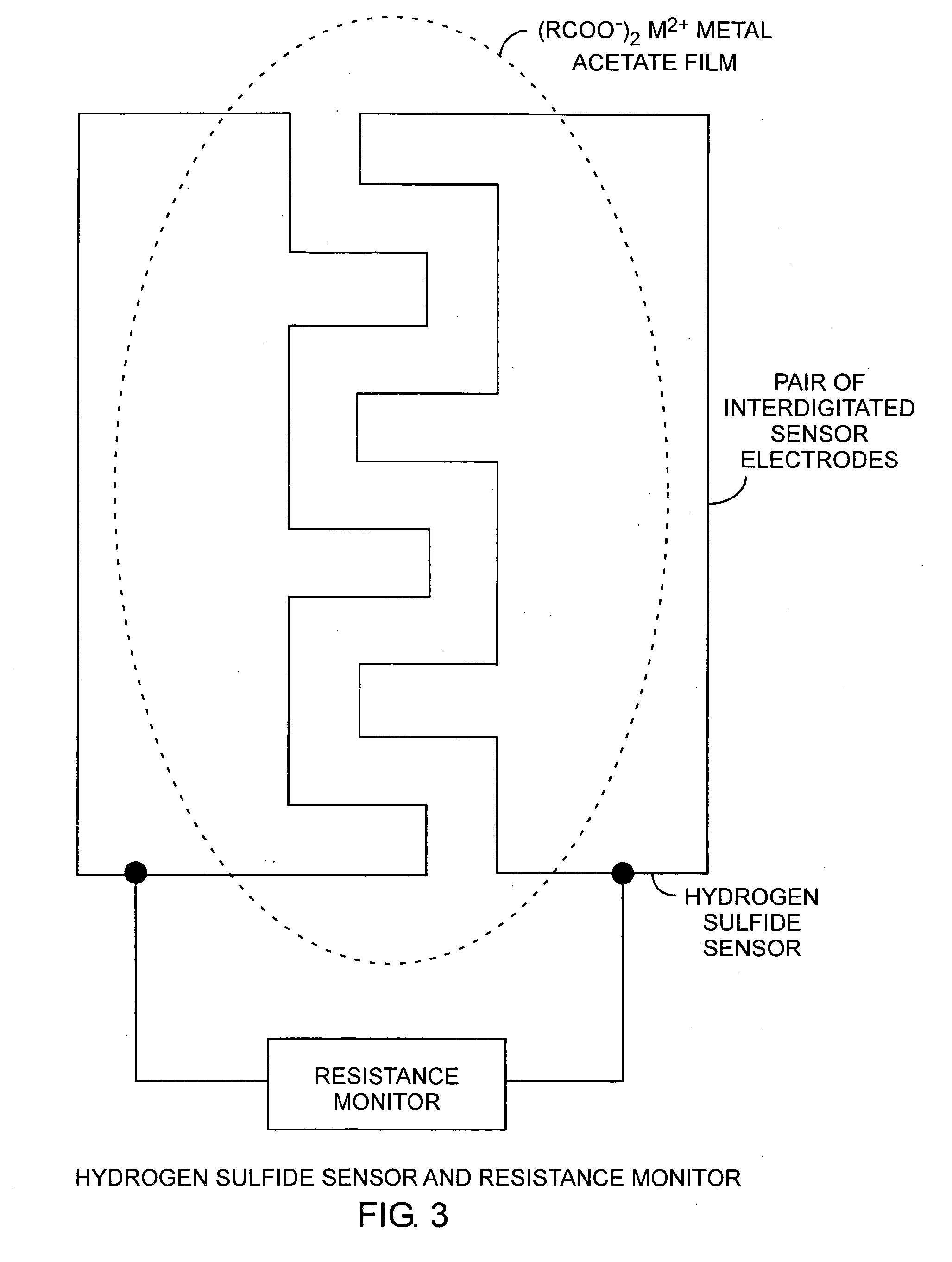Metal salt hydrogen sulfide sensor
a technology of hydrogen sulfide and metal salt, applied in the field of chemical sensors, can solve the problems of large conductivity changes induced
- Summary
- Abstract
- Description
- Claims
- Application Information
AI Technical Summary
Benefits of technology
Problems solved by technology
Method used
Image
Examples
Embodiment Construction
[0023]An embodiment of the invention is described with reference to the figures using reference designations as shown in the figures. Referring to FIG. 1, copper acetate Cu(CH2COO−)2 reacts with hydrogen sulfide acid H2S to form copper sulfide and acetic acid HOOCCH3. Copper sulfide is conducting. When a copper acetate film is exposed to hydrogen sulfide, a weak acid, the conductivity of the film changes. As such, copper acetate films can be used as a hydrogen sulfide detector.
[0024]Referring to FIGS. 1, 2, and 3, and more particularly to FIGS. 2 and 3, a hydrogen sulfide sensor is made by producing 10 a metal salt, such as copper acetate, in solution and depositing and drying 12 the copper acetate on a sensor substrate. In practice, when the sensor is exposed 14 to hydrogen sulfide, a resistance monitor can be used to measure the change in resistance for detecting the presence of hydrogen sulfide. A pair of electrodes is disposed on the sensor substrate and is used to make electric...
PUM
| Property | Measurement | Unit |
|---|---|---|
| conductivity | aaaaa | aaaaa |
| boiling point | aaaaa | aaaaa |
| diameters | aaaaa | aaaaa |
Abstract
Description
Claims
Application Information
 Login to View More
Login to View More - R&D
- Intellectual Property
- Life Sciences
- Materials
- Tech Scout
- Unparalleled Data Quality
- Higher Quality Content
- 60% Fewer Hallucinations
Browse by: Latest US Patents, China's latest patents, Technical Efficacy Thesaurus, Application Domain, Technology Topic, Popular Technical Reports.
© 2025 PatSnap. All rights reserved.Legal|Privacy policy|Modern Slavery Act Transparency Statement|Sitemap|About US| Contact US: help@patsnap.com



